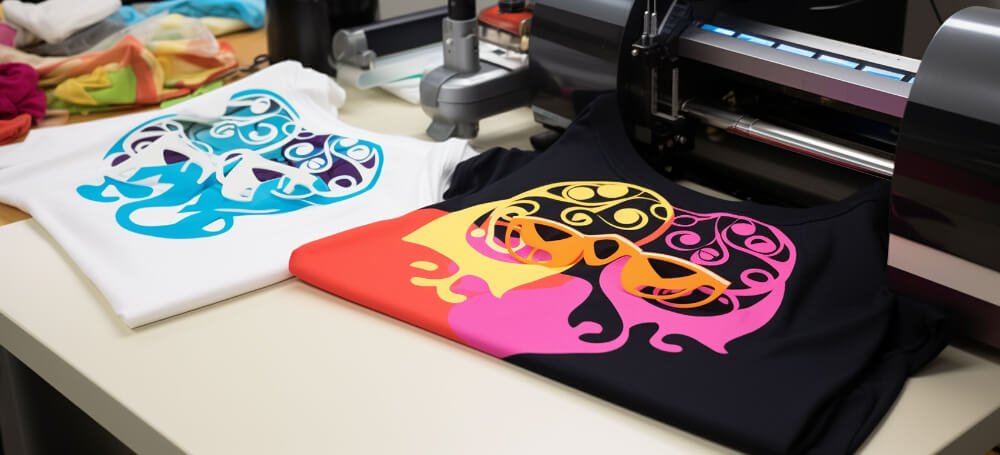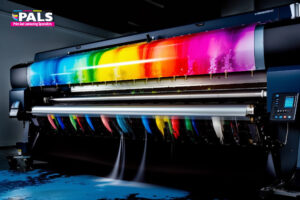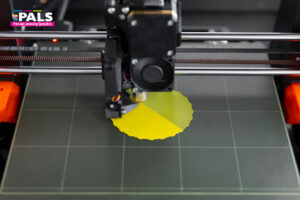Recent Facts and News Related to Puff Printing
- Innovative Techniques: Puff printing technology has advanced with new inks that enhance texture and durability.
- Sustainability Trends: Many companies are focusing on eco-friendly inks and materials in puff printing.
- Market Growth: The demand for custom apparel featuring puff printing is on the rise, particularly in fashion and promotional products.
- Consumer Preferences: Studies show a growing preference for tactile elements in printed apparel, boosting puff printing popularity.
Ever noticed a design that seems to pop right off a fabric or accessory, adding a unique textured feel? That’s the magic of puff printing, also known as raised ink printing.
This unique screen printing technique creates a raised, textured effect that brings logos, graphics and artwork to life, adding depth and dimension in a way that feels almost tangible.
Puff printing has come a long way since its beginnings in the 1980s and today it’s a go-to choice across the worlds of fashion, branding and promotional items. Wondering how it all works and why it’s become so popular?
In this blog post, we’ll dive into everything you need to know about puff printing—how it’s created, where it’s used and what makes it such a standout technique in design.
The Process of Puff Printing
Puff printing is a cool screen printing technique that gives designs a raised, puffy look. This effect comes from mixing regular screen printing ink with a foaming agent that expands—or “puffs” up—when heated. Here’s how it works, step by step:
- Design Preparation: It all starts with creating a design—whether it’s a logo, some text or artwork—created on a computer or by hand. This design is then transferred onto a mesh screen, which acts like a stencil, so only the areas with the design let the ink pass through.
- Mixing the Puff Ink: Next, special puff ink is prepared by adding a heat-activated foaming agent to regular screen printing ink. When heated, this agent causes the ink to expand, creating that signature puffed effect on the fabric.
- Printing the Design: The prepared screen is placed over the fabric and the puff ink is spread across the screen. A squeegee is used to push the ink through the stencil, printing the design onto the fabric—just like traditional screen printing but with that extra texture from the puff ink.
- Heating the Print: After printing, the fabric goes through a dryer. The heat transfer activates the foaming agent, causing the ink to expand and create a raised, puffy texture. This is what gives “puff” printing its name.
- Curing the Print: Finally, the textile printing is “cured” by heating it again to set the design in place. This curing process ensures the raised design stays attached and keeps its shape, making it durable and long-lasting.
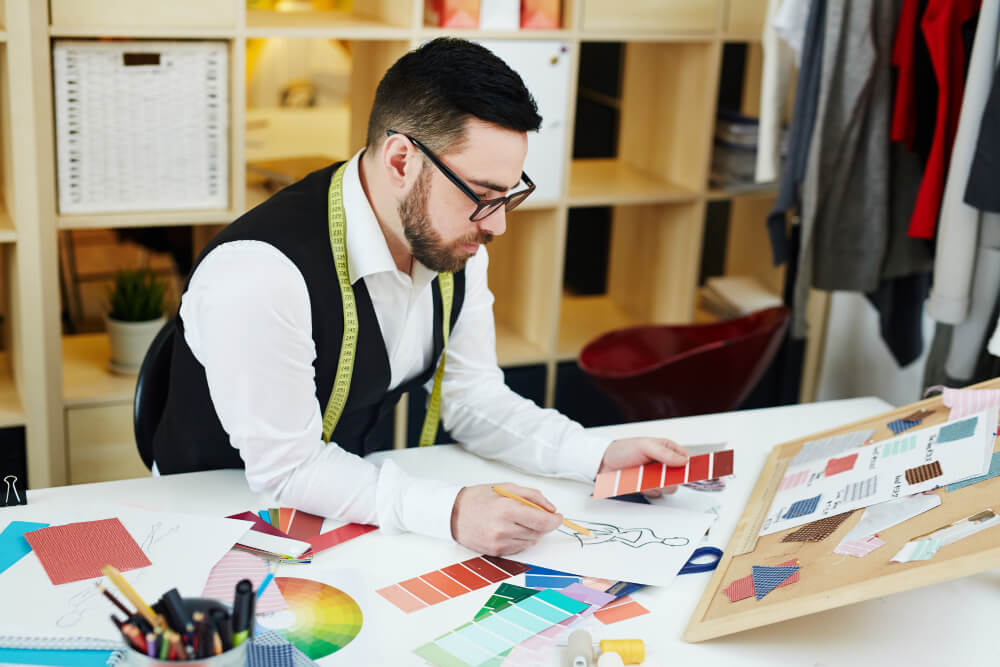
Advantages of Puff Printing
Puff printing is a popular choice for custom apparel because it combines a unique look, durability and affordability, making it ideal for creating designs that stand out and last.
Here are the benefits of puff printing:
- 3D Textured Look: Puff printing creates a raised, 3D effect that adds depth and makes designs pop.
- Works with Standard Inks: You can combine puff ink with regular screen printing inks to create intriguing effects, adding extra dimension to your design.
- Durable and Long-Lasting: The raised print is tough and can handle multiple washes without fading or flaking, so your design gives a fresh look and feel.
- Cost-Effective: Puff printing is an affordable way to get a high-quality, professional look without spending a gigantic sum.
- Good for Large Orders: This technique is efficient for bulk printing, making it a practical choice for large-volume orders.
- Great for Simple and Complex Designs: Puff ink works well with both single-colour and multi-color designs, adding texture and focus to any artwork.
Applications of Puff Printing
Puff printing is just perfect for creating eye-catching, custom pieces across various industries. Here’s how puff printing can elevate different types of products and applications:
Custom Apparel
Puff printing adds a unique look to clothing like T-shirts, hoodies, tank tops and caps. Well, that’s just half the list. It works well on various parts of a garment—chest, sleeves or back—creating designs that stand out. Whether it’s a logo, text or artwork, puff printing adds an eye-catching dimension.
Custom Merchandise
Beyond clothing, puff printing can be applied to items like tote bags, canvas pouches and other accessories. The raised texture of puff printing makes these items feel high-quality and eye-catching, which is great for branding and promotional purposes.
Streetwear and Fashion
Puff printing is a favourite in streetwear and fashion, often used for bold designs, large graphics or textured prints logos on sweatshirts, jackets and pants. It adds a 3D screen printing element that gives a premium, standout quality to each piece.
Corporate and Promotional Items
Puff printing is popular for promotional products as it enhances logos and brand names, making them unforgettable. Companies use puff printing on caps, jackets and bags for events and giveaways, giving a professional look that stands out from regular printing.
Sports and Team Apparel
For jerseys, hoodies and athletic wear, puff printing is ideal for making numbers, names and logos pop. This technique is durable, holding up well under frequent washing, so sports gear keeps its raised look over time.
Choosing the Right Materials for Puff Printing
Getting the perfect puff print isn’t just about technique—it’s about choosing the right fabrics and inks to make that raised effect really prominent.
Here’s a simple guide to help you select materials that work best with puff printing, ensuring quality, durability and eye-catching results.
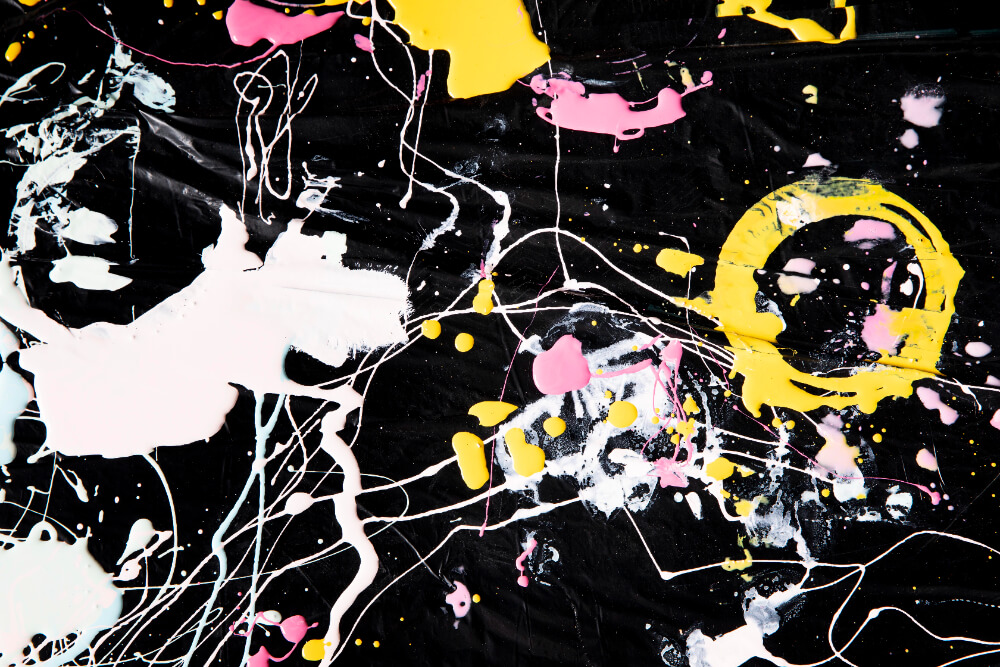
Best Inks for Puff Printing
- Plastisol Ink: Plastisol is a popular choice for puff printing because it’s durable, colour-rich and holds up beautifully over time. This ink sits on the fabric’s surface, giving it an opaque, raised texture that works perfectly with puff effects. Plus, it can be colour-matched to get your design looking just right.
- Water-Based Ink: For a soft, breathable finish, water-based inks are a great option. While they’re a bit trickier to handle due to quick-drying, the end result is a smooth, soft print. When used with puff ink, water-based inks bring a vibrant, lightweight feel—especially effective on lighter fabrics.
- Metallic Ink: If you’re looking for a bold, shiny effect, metallic inks pair well with puff printing. Though they don’t work well for very detailed designs, metallic puff prints create a striking, dimensional look. This combo can make any design stand out with a unique, eye-catching texture.
Best Fabrics for Puff Printing
Not all fabrics handle puff printing equally. For a lasting, quality print, go for materials that can withstand the heat needed to activate puff ink:
- Cotton: Cotton is a go-to choice for puff printing. It can withstand high temperatures without damage, making it ideal for the puff effect. Plus, cotton holds the raised texture well, even after multiple washes.
- Cotton Blends: Cotton blends (like cotton-polyester) are also great for puff printing. They offer a nice balance of durability and heat resistance, so your design will look great and last long.
- Polyester: Polyester can work with puff printing, but it requires careful handling to avoid scorching. Lower-temperature puff additives make this material a good option, especially if you want to experiment with different textures.
- Canvas: For a sturdier look, canvas is perfect—especially for items like tote bags or jackets. Canvas handles heat well and keeps the puff design looking bold and intact.
Fabrics to Avoid for Puff Printing
Some fabrics don’t react well to the high heat puff printing requires. Here are a few to avoid:
- Nylon: Nylon’s low melting point means it can easily be damaged by heat, so puff printing isn’t a good choice here.
- Acrylic: Similar to nylon, acrylic can warp or melt under high temperatures, making it unfit for puff printing.
- Rayon: While rayon can handle some heat, it tends to shrink or lose its shape, which can distort puff designs.
- Silk: This delicate fabric is highly sensitive to heat, so puff printing is generally too risky for silk items.
Why Does Material Choice Matters?
Choosing the right fabric and ink is key to a successful puff print. The combination of durable inks and heat-resistant fabrics ensures your design maintains its raised effect, vivid colour and quality over time.
For the best results, go with sturdy materials like cotton, canvas and blends—and let Print and Laminating Specialists help you choose the right fit to make your puff-printed design really stand out. Every choice affects the final look and feel and we’re here to make sure it’s just right.
Common Mistakes in Puff Printing
Getting the best results from puff printing requires attention to detail. Here are some common puff printing mistakes to watch out for and tips on how to avoid them:
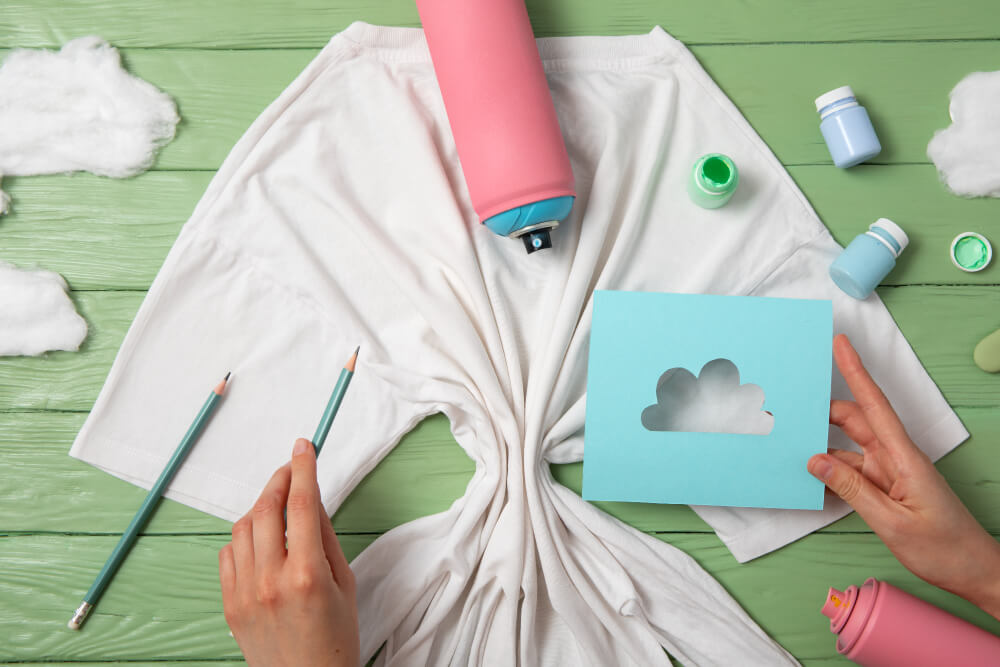
Skipping the Test Print
Not doing a test print is one of the easiest mistakes to make. A test print helps you spot any issues and fine-tune the design before printing a full batch, saving you time and materials.
Using Poor-Quality or Incompatible Ink
Low-quality or incompatible inks can cause bleeding, fading or a poor puff effect. For best results, use high-quality inks made for screen printing, like plastisol or water-based ink, which work well with puff printing on fabric.
Choosing the Wrong Fabric
Puff printing requires fabrics that can handle heat, like cotton and canvas. Delicate fabrics, like nylon or silk, can melt or warp, so avoid using these to keep your design intact.
Applying Too Much or Too Little Ink
Uneven ink application can mess up the puff effect. Too much ink can create a bulky look, while too little won’t puff up enough. Make sure to apply the ink evenly across the design for a smooth, consistent texture.
Using the Same Screen Mesh for Every Job
Each design needs the right screen mesh count to control how much ink flows through. Using the wrong mesh can result in a design that’s too thick or too thin. Adjust the mesh based on the design’s details for a clean, crisp print.
Using Low-Quality Printers
Low-quality printers can make your design look blurry or low-resolution. For sharp, professional results, use a high-quality printer that captures fine details and enhances the puff effect.
Incorrect Color Mode or Profiles
Using RGB instead of CMYK can cause colour mismatches in the final print. Always switch to CMYK and use the correct colour profiles to get accurate colours that match your design.
Incorrect Bleed Settings
Setting up the bleed correctly is crucial to avoid unwanted white edges. This ensures your design prints edge-to-edge, creating a smooth, seamless look.
Future Trends in Puff Printing
Puff printing is evolving in interesting ways and there’s a lot to look forward to. Here’s a quick look at some trends making waves in this printing style:
- Layered Textures for Extra Impact: Puff printing is moving beyond simple raised designs. New techniques are adding extra layers and mixing puff ink with metallics, creating designs that feel as good as they look.
- Personalization and Custom Touches: Customization is everywhere these days and puff printing is the perfect way to make something unique. Whether it’s a custom logo on a hoodie, team gear or a t-shirt for a special event, puff printing adds that extra touch, making each piece personal and noticeable.
- Eco-Friendly Puff Printing: As more people care about sustainability, puff printing is gradually making its headlines. Many printers are using water-based inks and eco-friendly processes, allowing customers to get stylish prints that leave behind a positive impact on the environment.
- Combining Digital and Puff Printing: A big trend to watch is blending puff printing with digital printing. This combo allows for detailed designs with a unique textured effect, combining sharp digital images with the raised feel of puff.
These trends show that puff printing is constantly growing, with each new idea bringing a fresh twist.
From personalization to eco-friendly options, puff printing with PALS is a creative, versatile way to make your designs stand out with a unique touch.
Conclusion
As we wrap up, puff printing clearly shines as a fantastic way to add texture and depth to your designs. This technique not only boosts visual appeal but also brings versatility and durability, making it ideal for custom textile prints or other creative projects.
To keep your puff-printed items looking their best, remember these simple care steps:
- Wash inside out on a gentle cycle
- Air dry when possible
- Use low heat if ironing
- Fold and store in a cool, dry place
PALS is here to bring your designs to life with quality puff printing that adds style, depth and a lasting impact.
We also provide custom printing on aluminium composite panels and design vinyl printable stickers, offering durable and eye-catching options for your branding and signage needs.
FAQs
How durable is puff printing and does it fade or crack over time?
Puff printing is quite durable and holds up well if cared for. At PALS, we recommend washing items inside out on a gentle cycle, air drying when possible and avoiding high heat. These simple steps help keep the raised texture from fading or cracking over time.
Can puff printing be applied to different types of fabrics and materials?
Yes! Puff printing works best on fabrics like cotton, cotton blends, polyester and canvas that handle heat well. At PALS, we advise skipping delicate fabrics like silk or nylon, as they don’t react as well to the heat used in puff printing.
Does puff printing work well with multicolor designs?
Absolutely. Puff printing is great for emphasising parts of a multicolor design by using puff only on select areas. At PALS, we can help create a balanced look that makes each colour pop without losing any details.
Is puff printing eco-friendly?
We strive to make puff printing as eco-friendly as possible. At PALS, we use water-based inks and work to minimise waste, offering you a sustainable choice with puff printing.
Where does PALS provide its services?
PALS proudly offers printing services Australia-wide! No matter where you’re located, we’re here to help bring your designs to life with quality and care, anywhere in the country.
Can puff printing be used for small, detailed designs?
Puff printing is best with bold, simple shapes, as tiny details can sometimes blur. For intricate designs, PALS suggests combining puff with other techniques to keep details clear while adding that raised texture where it counts.

